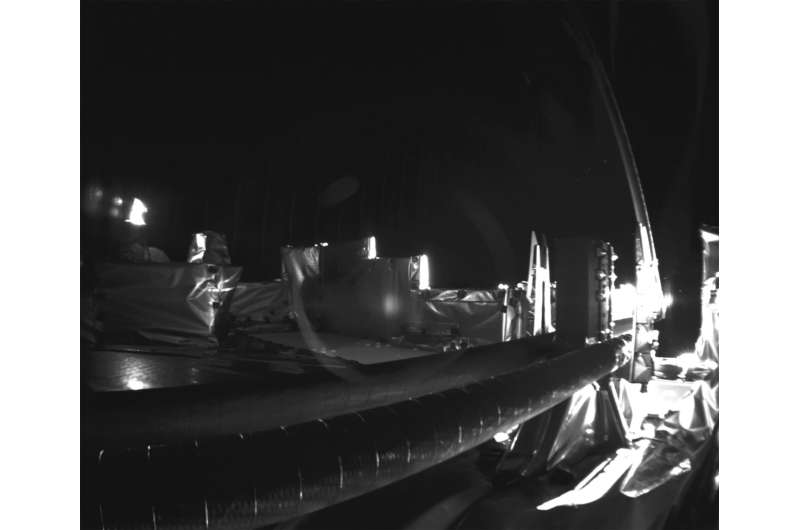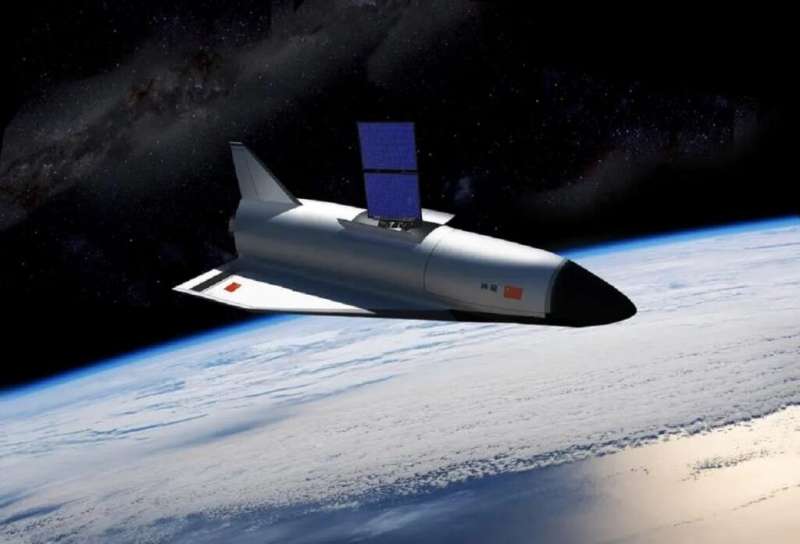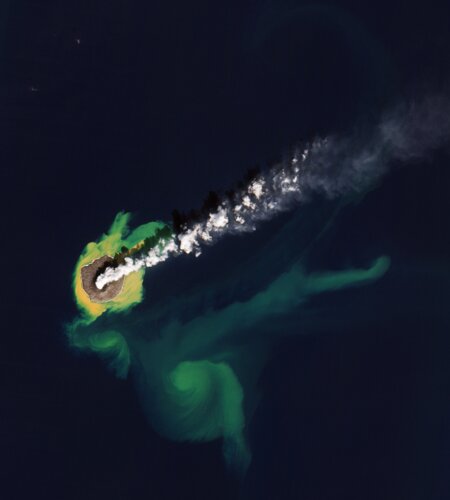Astroscale and Momentus offer concept for reboosting Hubble
Sunday, 14 May 2023 15:01
Two companies have disclosed details about how they could raise the orbit of the Hubble Space Telescope as NASA evaluates that and other concepts offered to the agency.
SpaceX launches 56 Starlink satellites early Sunday
Sunday, 14 May 2023 06:15 On Sunday, May 14, at 01:03 EDT (05:03 UTC), SpaceX launched an additional batch of 56 Starlink internet communication satellites into low Earth orbit (LEO) from Space Launch Complex 40 (SLC-40) at the Cape Canaveral Space Force Station in Florida.
About 50% of all successful orbital launches so far this year have been conducted by SpaceX. The 56 Starlink satellites will equal the four Fal
On Sunday, May 14, at 01:03 EDT (05:03 UTC), SpaceX launched an additional batch of 56 Starlink internet communication satellites into low Earth orbit (LEO) from Space Launch Complex 40 (SLC-40) at the Cape Canaveral Space Force Station in Florida.
About 50% of all successful orbital launches so far this year have been conducted by SpaceX. The 56 Starlink satellites will equal the four Fal Juice's RIME antenna breaks free
Saturday, 13 May 2023 22:11 Over three weeks since the initiation of the deployment process for Juice's Radar for Icy Moons Exploration (RIME) antenna, the 16-meter-long boom has finally been liberated from its mounting bracket.
During the first attempt at stretching out the compacted antenna, only the initial segments of each half were released. The flight controllers theorized that a minuscule stuck pin prevented t
Over three weeks since the initiation of the deployment process for Juice's Radar for Icy Moons Exploration (RIME) antenna, the 16-meter-long boom has finally been liberated from its mounting bracket.
During the first attempt at stretching out the compacted antenna, only the initial segments of each half were released. The flight controllers theorized that a minuscule stuck pin prevented t Virgin Orbit extends deadline for bankruptcy auction bids
Saturday, 13 May 2023 13:06
Virgin Orbit has extended the deadline for bids as part of its bankruptcy auction process that the company says has attracted interest from dozens of potential bidders.
Pioneer 11, launched 50 years ago, helped solve mysteries of the universe
Saturday, 13 May 2023 08:38 As NASA and private industry prepare for a U.S. return to the moon after more than five decades, observers fondly remember early ventures that traveled deep into interstellar space and sparked excitement about exploring cosmic wonders.
One of the trailblazers was Pioneer 11, a robotic forerunner of such exploration and the first spacecraft to reach Saturn, the ringed and most iconic pla
As NASA and private industry prepare for a U.S. return to the moon after more than five decades, observers fondly remember early ventures that traveled deep into interstellar space and sparked excitement about exploring cosmic wonders.
One of the trailblazers was Pioneer 11, a robotic forerunner of such exploration and the first spacecraft to reach Saturn, the ringed and most iconic pla Cosmonauts wrap up 5-hour ISS spacewalk
Saturday, 13 May 2023 08:38 Russian cosmonauts Dmitri Petelin and Sergey Prokopyev concluded their five-hour spacewalk at the International Space Station Friday.
The cosmonauts first spent the day readying their Orlan spacesuits in the Station's Poisk airlock, where they attached batteries, checked for leaks and tested the suits' communications systems.
The pair had completed two previous spacewalks since A
Russian cosmonauts Dmitri Petelin and Sergey Prokopyev concluded their five-hour spacewalk at the International Space Station Friday.
The cosmonauts first spent the day readying their Orlan spacesuits in the Station's Poisk airlock, where they attached batteries, checked for leaks and tested the suits' communications systems.
The pair had completed two previous spacewalks since A Space Development Agency issues draft solicitation for 100 satellites
Friday, 12 May 2023 21:10
In a May 11 draft solicitation, the agency laid out its requirements for 100 “Alpha” satellites that will be part of a mesh network known as Transport Layer Tranche 2.
Stuck antenna freed on Jupiter-bound spacecraft
Friday, 12 May 2023 20:33
A crucial radar antenna on a European spacecraft bound for Jupiter is no longer jammed.
Eutelsat eager for OneWeb uplift as broadcast sales plummet
Friday, 12 May 2023 18:29
A shrinking broadcast business led to another drop in revenues for Eutelsat as the French satellite operator edges closer to merging with OneWeb, the low Earth orbit constellation set to boost its shift into connectivity services.
China has its own secret space plane, and it just landed
Friday, 12 May 2023 16:55
A lot has changed since the last Space Age. Unlike the days of Sputnik, Vostok, Mercury, and Apollo, the current era is not defined by two superpowers constantly vying for dominance and one-upmanship. More than ever, international cooperation is the name of the game, with space agencies coming together to advance common exploration and science goals.
Similarly, there is the way the private space sector has become a major participant, providing everything from launch services and commercial payloads to satellite constellations and crews.
But in some ways, old habits die hard. Since the turn of the century, China has emerged as a major power in space, to the point of becoming a direct competitor with NASA's human space programs. For the past few years, China has been developing a reusable autonomous spaceplane to compete with the X-37B Orbital Test Vehicle (OTV).
Known as Shenlong ("divine dragon"), this spaceplane recently concluded its second test flight after spending 276 days in orbit.
Juice’s RIME antenna breaks free
Friday, 12 May 2023 15:27
More than three weeks after efforts began to deploy Juice’s ice-penetrating Radar for Icy Moons Exploration (RIME) antenna, the 16-metre-long boom has finally escaped its mounting bracket.
Europe's first lunar ‘lamb-bassador’
Friday, 12 May 2023 14:14
Last month, ESA’s woolly astronaut became Europe's first lunar ‘lamb-bassador’: Shaun the Sheep returned home from his Artemis I mission to a hero's welcome and then was herded off on a celebratory post-flight tour.
Op-ed | The dramatic influence of generative AI on the space industry
Friday, 12 May 2023 12:33
As we find ourselves amidst a tectonic technology shift, adopting AI systems will undoubtedly prove critical in protecting our national security and our space infrastructure.
Week in images: 08-12 May 2023
Friday, 12 May 2023 12:10
Week in images: 08-12 May 2023
Discover our week through the lens
First Intuitive Machine lunar lander mission slips to the third quarter
Friday, 12 May 2023 10:35
Intuitive Machines says its first lunar lander mission has slipped into the third quarter of this year as pursues a wider range of business opportunities.

